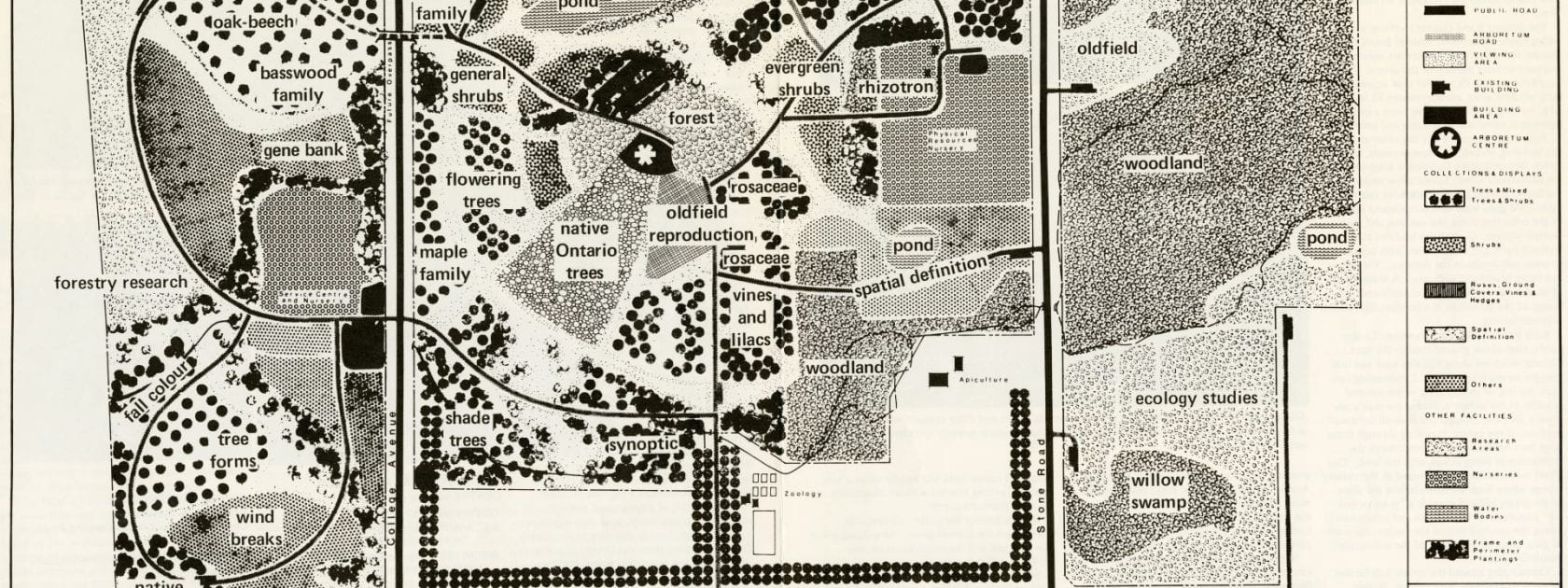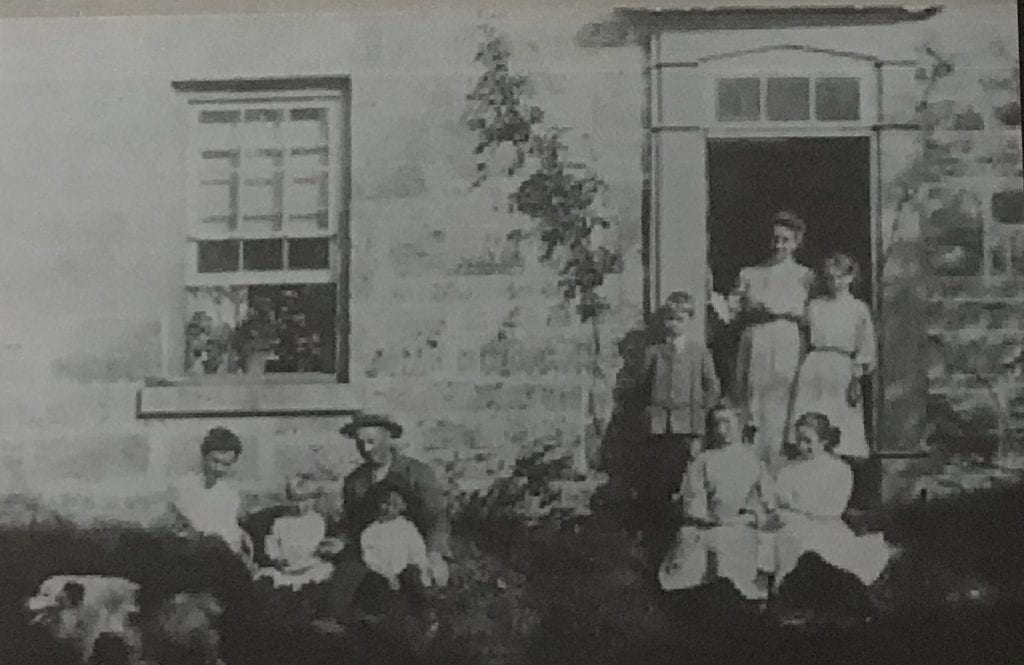Header image: Map of The Arboretum’s plant collections, 1970
To trace the history of the land, one must look far past the official creation of The Arboretum, to the natural history of the land itself and the many occupants and users of the land over time.
In the late Paleozoic to the early Mesozoic era, Earth’s landmass was a single supercontinent called Pangaea. As the continents separated, plant populations became isolated and evolved independently. The impact of this evolution can be seen in the tree and shrub variations showcased in the World of Trees Collection.
The Haudenosaunee, Anishinaabe and Attawandaron peoples lived on and cared for the land that now hosts The Arboretum, the University of Guelph and the City of Guelph.
The Mississaugas, Three Fires (the Ojibway, Odawa and Potawatomi) and Iroquois contested this region during the Beaver Wars. Following their victory, a group of Mississaugas settled on the land between Toronto and Lake Erie, becoming known as the Mississaugas of the New Credit First Nation. Through the 1792 Between the Lakes Purchase Treaty No. 3, the Mississaugas of the Credit ceded over 3,000,000 acres of land to the British Crown.
After the land was ceded, the British Crown divided the area into tracts and sold them to wealthy individuals for development. John Galt, a Scottish businessman, author, and superintendent of the Canada Company which was responsible for populating a part of Upper Canada (now part of southern Ontario). Galt first began developing Guelph in 1827 to attract potential settlers.
A few years later, in the mid 1850s, William and Ellen Hamilton purchased a 400-acre tract of land in Guelph. The Hamilton family worked to clear much of the area and develop a farm on this plot. In 1910, the family sold the land to the nearby Ontario Agricultural College to use as a research farm.
Over the next several decades, the notion of an arboretum lingered in the minds of O.A.C. professors. Many instructors believed that there was an opportunity in the Botany, Horticulture, and Landscape Architecture curricula that could be filled by an arboretum. Several proposals for an arboretum were submitted during this time but were postponed or rejected due to a lack of funding.
In 1963, the Arboretum Study Committee was formed by Professor R.J. Hilton. The Ontario Agricultural College was moving towards University status, and with the creation of the University of Guelph in 1964, it seemed like a good time to propose a new arboretum. For the next seven years, Hilton and a team of professors completed various studies on the benefits and feasibility of an arboretum. Eventually, they created and submitted an academic brief and a master plan to advocate for its creation. In December 1970, the University of Guelph’s Board of Governors approved the master plan for The Arboretum. After years of dreaming, The Arboretum was finally going to become a reality.
The first collection plantings took place in May 1971. A small group of employees using only a tractor and a crew-cab truck planted a collection of maple trees on the grounds. These trees mark the first official collection of The Arboretum.


During the next several years, The Arboretum slowly began to take shape. Arboretum employees and volunteers worked tirelessly to transform the farmland with trees and plants, establishing the beginnings of the gardens and collections. Trail systems were developed to encourage visitors to explore the grounds. The Arboretum’s infrastructure was developed and the O.A.C. Centennial Arboretum Centre (1974), the J.C. Taylor Nature Centre (1978) and the R.J. Hilton Centre (1988) were opened.
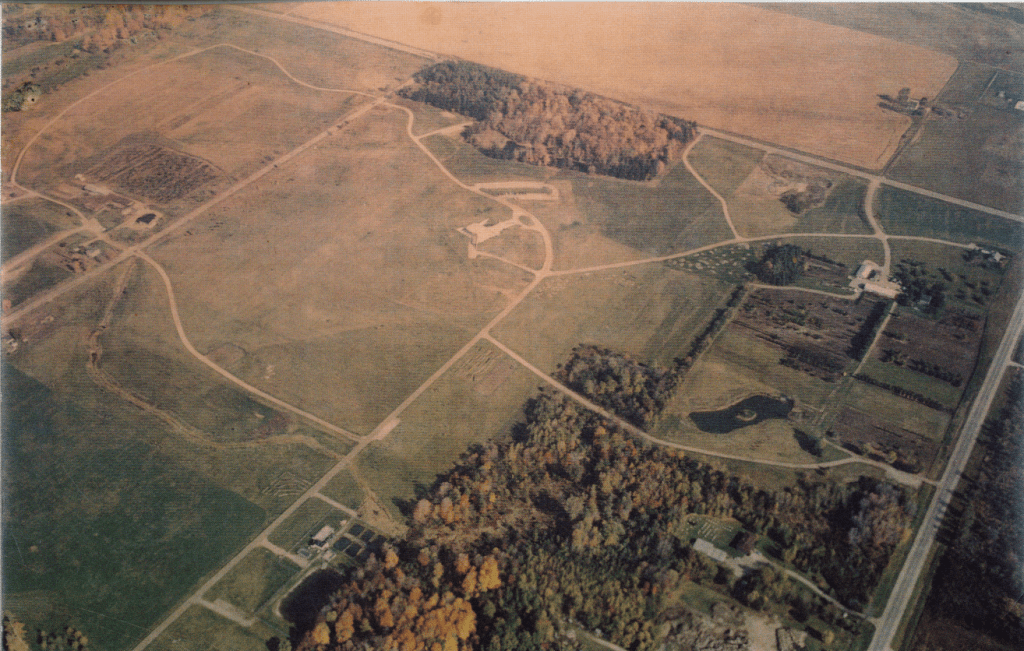
The Arboretum, 1977 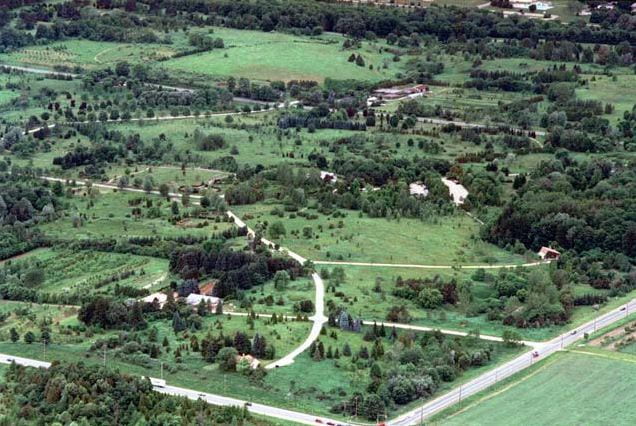
Aerial view of The Arboretum, 2004 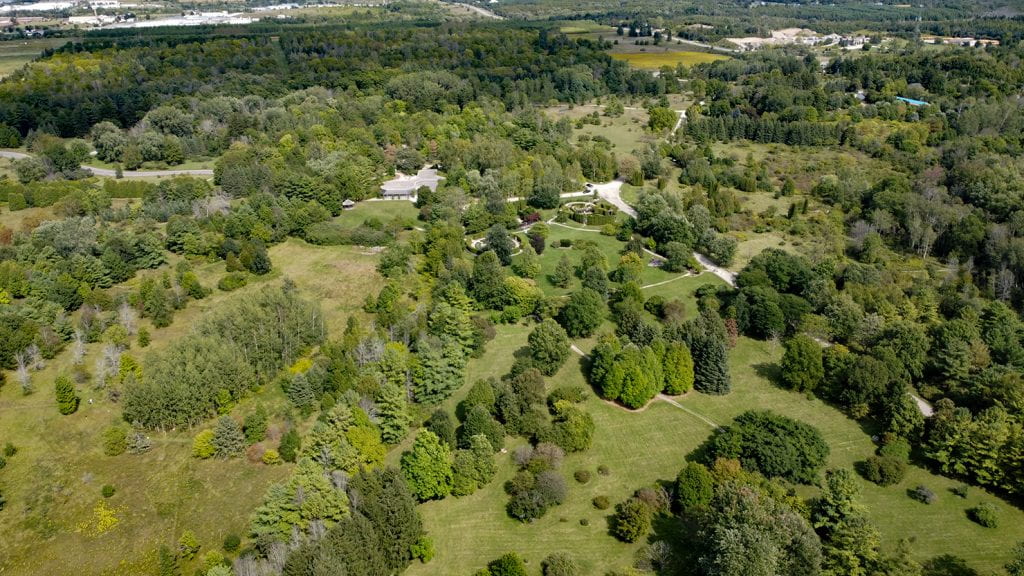
Aerial view of The Arboretum, 2020
Over the past half-century, The Arboretum has grown in reputation as a place to learn about, research, and protect the natural environment. The Arboretum’s various conservation, education, and research programs have allowed both the public and the academic community to engage with and learn about the natural world.


